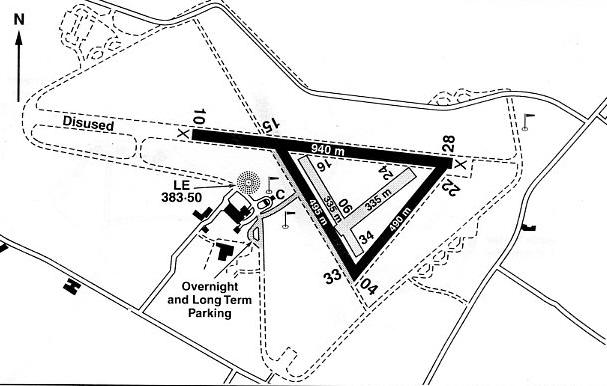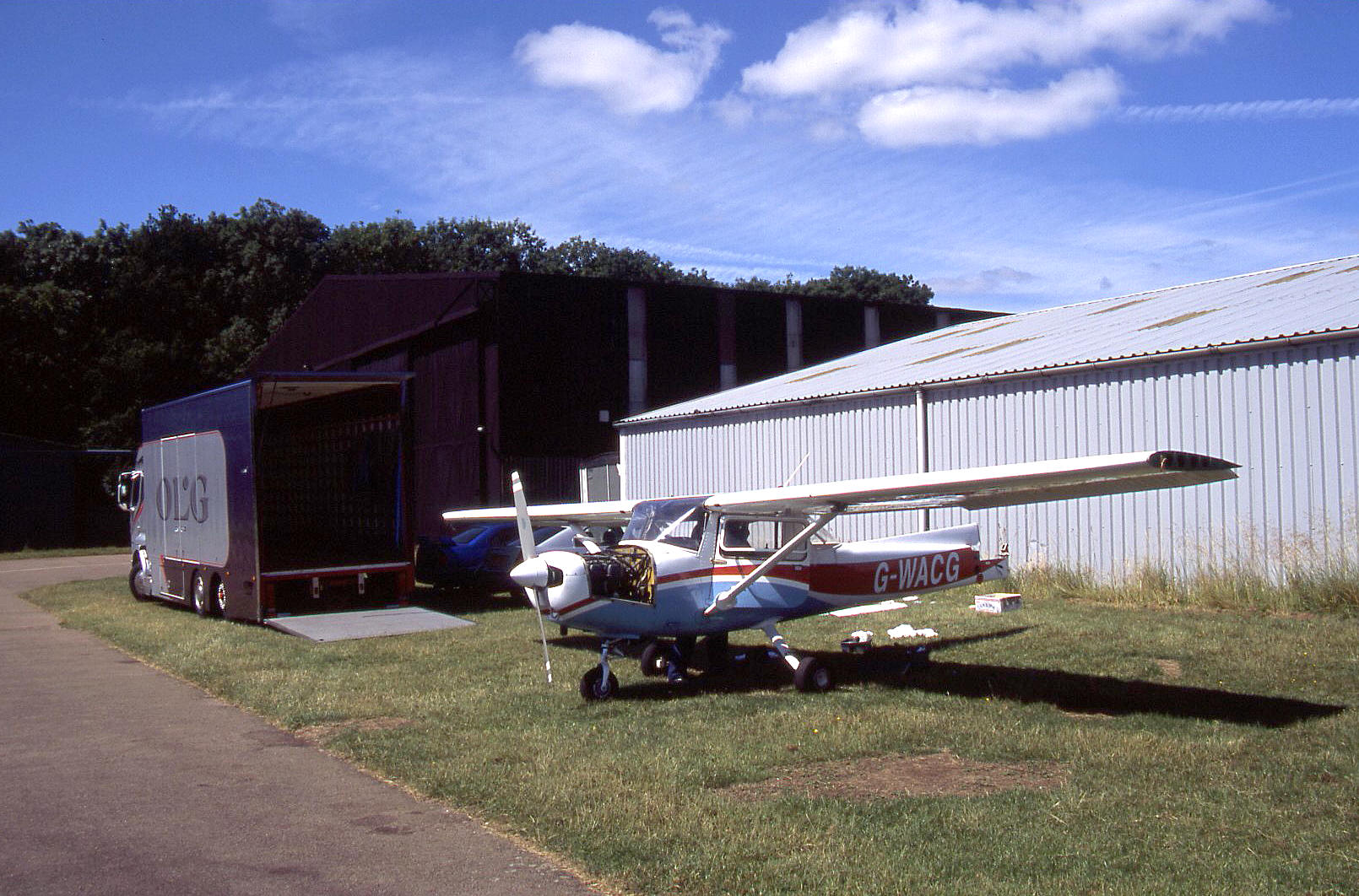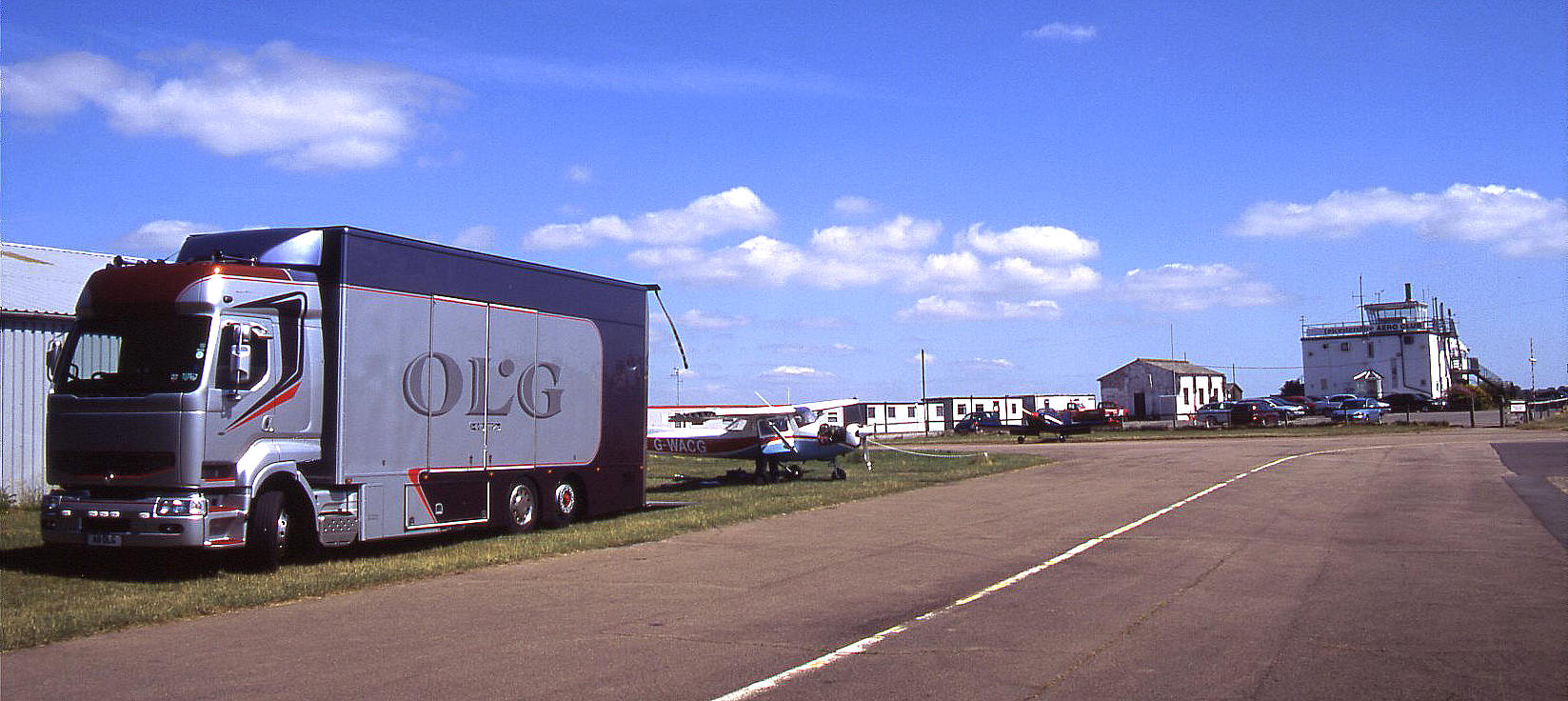Leicester East
LEICESTER EAST: Military aerodrome, later airport, now a civil aerodrome
(Known as RAF LEICESTER EAST in WW2, in 1990 simply as LEICESTER but now as LEICESTER AIRPORT)
Note: These three pictures were obtained from Google Earth ©
Note: All pictures by the author unless specified.
Military users: WW2: RAF with several false starts?
RAF Bomber Command 3 Group
190 Sqdn (Handley Page Halifaxs - possibly Short Stirlings initially?)
196 Sqdn (Short Stirlings)
620 Sqdn (Short Stirlings)
Note: There appears to be a priod when a few squadrons from 3 Group were transferred to 38 Group for use by the SOE (Special Operations Executive) for supplying resistance movements and so on. To date 196 Squadron was it seems certainly one such, but I need to investigate 620 Squadron in more depth.
Transport Command 46 Group
107 OTU (Douglas C-47 Dakotas)
(107 OTU became 1333 TCSU in 1945)
93 Group GSPS GPUTF
D Sq GPR (Airspeed Horsas)
Operated by: 1960s to present day: Leicestershire Aero Club
Note: In 1965 known more simply as Leicester Aero Club Ltd
Location: N of A6 at Great Glen, SW of A47 at Houghton-on-the-Hill, 4nm ESE of Leicester centre
Period of operation: Military: 1943 to 1948 Civil: 1950 to today
Flying schools: Post 1945: Delta Aviation, Leicestershire Aero Club, Leicester Flying Club
In the 1957 The Aeroplane directory, Leicestershire Aero Club are listed as operating two Austers and three DH82A Tiger Moths.
1959 ‘snapshot’: Leicestershire Aero Club
Microlight school: Ultra Air
Note: These maps are reproduced with the kind permission of Pooleys Flight Equipment Ltd. Copyright Robert Pooley 2014.
Runways: Note: Is there another UK aerodrome with a more complex mix of runways laid out over several years as this one?
WW2: 05/23 1280x46 hard 10/28 1829x46 hard 16/34 1280x46 hard
1965: 10/28 1806x46 hard (05/23 listed as closed)
At one point between 1950 to 1985 just:
06/24 grass 10/28 914 hard 16/34 grass
1990: 06/24 335x30 grass 10/28 940x30 hard 16/34 418x30 grass
2000: 04/22 490x18 hard 06/24 335x30 grass 10/28 940x30 hard
15/33 495x18 hard 16/34 418x30 grass
NOTES: WORLD WAR TWO
It now appears that the arrival of the Stirlings from 190, 196 and 620 Squadrons signalled the commencement of bombing operations here? Or, typically during that late period of the war, were the Stirlings being used for glider towing? I now think this might well be the case as ‘D’ Squadron of the Army GPR (Glider Pilot Regiment), arrived with their Horsas for the Stirling crews to practise towing exercises with. The USAAF sent a few Horsa and Waco Hadrian gliders across so a nearby US Army team could practise loading and unloading techniques. The USAAF also sent in C.47s and, of special interest, sometimes B.24 Liberators to collect ‘secret’ loads for clandestine missions.
WHY THE MOVES?
I’ve mentioned it elsewhere; the difficulty of following how squadrons were moved about during WW2, and in an almost insane frenzy towards the end of the war. Surely this programme must have been hugely wasteful of resources and very unsettling to all those involved? So who exactly were those behind this idea? Seemingly still working very hard to give the enemy every advantage? Utter incompetence has of course been the mainstay excuse of most military top brass in all three Services throughout most periods in our history, but does this excuse really make any sense in the later stages of WW2?
PFA RALLYS
Venue for the PFA (Popular Flying Association) Rally in 1979, 1980 and 1981.
KINGS CUP AIR RACES
Venue for the RAC ‘Stewards Cup’ and King’s Cup Air Races in each year from 1988 to 2004 with the exception of the King’s Cup race being cancelled in 1998 due to an earlier crash just after the FARA Race. Somewhat frustrating I cannot seem to find most of the details regarding the winning aircraft and all I have to date is the following:
04.09.88 S/Ldr M Baker
03.09.89 R Hayes and R Nesbitt
Note: How come it appears there were two winners? Was the race a draw? If so it was the only time this has happened in the history of the race which first started in 1922 from CROYDON (LONDON).
02.09.90 A Hawley
01.09.91 S Jones
06.09.92 Peter Crispe Cessna 337F Skymaster G-AWVS
05.09.93 Roger Hayes Beagle Pup?
04.09.94 Geoffrey Boot Cessna 340 N66SW 220
03.09.95 D Soul
01.09.96 E Coventry
07.09.97 Melanie Willes
Note: Ms Willies was the third female pilot to win the King’s Cup. The first was Miss Winifred Brown flying the Avro Avian III G-EBVZ from HANWORTH (LONDON) on the 5th July 1930. The second being Josephine O’Donnell flying the Piper PA-18 Super Cub G-NICK from RAF FINNINGLEY on the 19th September 1981.
05.09.99 Roger Hayes Beagle Pup?
03.09.00 M Konstantinovic
09.09.01 J Spooner Cessna 182 G-CBIL
08.09.02 S Ollier
06.09.03 Geoffrey Boot Beagle Pup 150 G-TSKY 131
12.09.04 Phil Wadsworth
THE END OF AN ERA
2004 was, until 2013 at least, the last time the King’s Cup was held here. It moved to SHOBDON (HEREFORDSHIRE) for the race in 2005, 2006 and 2012. If anybody could be kind enough to fill in the blanks (or some) it would be much appreciated. A request for information to the Royal Aero Club Trust has been to date, ignored.
PERSONAL MEMORIES
It was noted in a 1990 pilots flight guide that the original old runways 16/34 and 05/23 were not in use. (Later reintroduced for use as 15/33 and 04/22). I think this must have been round about the first time I flew into LEICESTER in the Cessna 172 G-WACZ from WYCOMBE AIR PARK on the 23rd May 1991. And, was given the grass runway 34 to land on. At 418 metres rather than the 700+ plus metres I was trained on, this grass runway looked incredibly short. On the other hand we are supposed to know the “book” values for how our aeroplane can operate. Trying it out for real is another matter of course, and I suppose this visit taught me an awful lot about flying at that stage.
I had to fly accurately and had a passenger who had never flown in a light aircraft before. Talk about taking a responsible “approach” - this was it. All that theory stuff suddenly had to be brought into action. I knew I could ‘go around’ but looking back I doubt I’ve ever concentrated as much on getting the approach profile as exactly right as I did on that day. It worked out fine, the “approach profile” and numbers learnt worked - but phew! Was I glad they did! Soon after doing this I set about doing some farm strip flying and have never looked back. There is, and I am absolutely certain about this, no better discipline for accurate flying for take-offs and landings than flying into marginal farm strips. No ATC, perhaps a windsock - and that's it.
ANOTHER VISIT
I did fly into LEICESTER a few years years later in the Piper PA-28-161 Cherokee Warrior II, G-BTKT, on the 8th April 1995 with a tricky crosswind on the hard runway 10, and that was another steep learning curve. Without much doubt a tad "all shit and feathers" affair, but safely down.
DELIVERING & COLLECTING
In 2006 I was given the job of collecting the Cessna 152 G-WACG
However, in July 2012, I had the task of delivering the fully restored Indian Air Force DH.82A Tiger Moth (G-CGYN/HU-512) here, for onward shipment to India, and that is another fond memory.
Bruce Hutton
This comment was written on: 2021-05-11 16:57:58Re:"Operated By" heading, the Leicestershire Aero Club has operated continuously from 1950 to the present. This event followed a move from Ratcliffe Airfield when that airfield was closed, I think after the death of Sir Lindsey Everard. The first club aircraft there were Auster JI/Ns shortly followed by two Beagle Terriers. Austers from Rearsby were regularly stored at Leicester during this early period. The Leicestershire Aero Club was first formed in1909, later with two GIpsy Moths in 1929, The Fernie and the Quorn.
We'd love to hear from you, so please scroll down to leave a comment!
Leave a comment ...
Copyright (c) UK Airfield Guide



























